Thursday, 17 December 2009
Further sources on the relativity scam...
I tried the latter and failed so if anyone can give me a clue how to do it, I'd be grateful.
As to further sources, I suggest the following:
1. Dingle, Prof Herbert. Science at the Crossroads. London, 1972.
2. Anything by Pierre Duhem, the great French historian of science.
3. Anything by Christoph von Mettenheim, especially on Einstein.
4. For the technical, try Tom van Flandern's 1998 article in Physics Letters A which can be accessed here:
http://www.metaresearch.org/cosmology/speed_of_gravity.asp
That should give you something to think about for a while!
There is a very useful book, in simple form, which summarises many of the modern scientific falsehoods which I cannot now find. If I find it I shall post it to the blog.
Thursday, 26 November 2009
Einstein & relativity: Tycho's simpler alternative
But it is a thesis too radical for our times and one that no scientist is likely to feel the courage to entertain.
It is geostasis. In short, a stationary Earth or, at least, a revolving but not orbiting Earth.
Nuts? Well, maybe.
Yet this would most easily explain Airey’s failure, the Michelson result and the Sagnac result and would dispense with any need to posit a constant for the speed of light. Nor would it require any of the contradictions of SR and GR. Curved space-time reverts to the academic museum of curios from whence it ought never to have escaped.
One past astronomer of international fame, faithfully reproducing what he observed in the night sky, did produce a model of the solar system which accords completely with what is observed.
He was the famous Danish Astronomer and mentor of Johannes Kepler, his pupil, namely Tycho Brahe, later Astronomer-Imperial to the Holy Roman Emperor.
_-_Google_Art_Project.jpg) |
| Tycho Brahe was a Danish astronomer of Rennaissance times. His system - even today - accords most accurately with what you see in the night sky. |
Kepler inherited all Tycho’s calculations but later falsified them to fit his new-fangled ellipse theory.
Nevertheless, it is the Tychonian system which, even today, remains the most true to what is observed in the night sky. It explains, for instance, the apparent reversal of motion of Venus and Mercury which the Copernican system explains only by the use of epicycles.
There is a common misconception that the Copernican model did away with the need for epicycles. This is not true. The Copernican model could not explain all the details of planetary motion on the celestial sphere without epicycles. Indeed, the Copernican system required more than the Ptolemaic system. However, the Tychonian system requires none at all.
In the Tychonian system, the Moon and the Sun rotate around the Earth. Mercury, Venus, Mars, Jupiter, and Saturn rotate around the sun but the orbits of all save Mercury and Venus encompass also the Earth. Thus, from the perspective of the Earth, both Mercury and Venus appear, at one point in their sub-orbit round the Sun, to go into reverse as the Sun orbits the Earth.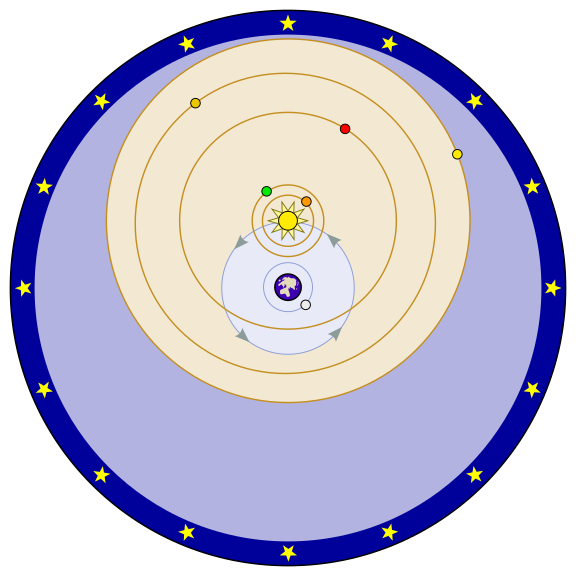
But what of Stellar Parallax? This was the proof, surely, of heliocentrism?
Well, no.
Distance measurement by parallax is a special case of the principle of triangulation. The careful measurement of the length of one baseline can fix the scale of an entire triangulation network.
In parallax, the triangle is extremely long and narrow, and by measuring both its shortest side (the motion of the observer) and the small top angle (the other two being close to 90 degrees), the length of the long sides (in practice considered to be equal) can be determined.
Two different measurements are taken six months apart, to allow for the presumed 186 million miles that the earth travels in its alleged orbit during that time period, from one side of the sun to the other.
Parallax is the appearance that stars move in the sky in relation to each other, or in other words, more “distant” stars shift every six months in relation to nearby stars that are allegedly closer. This is put forth as the evidence that the earth revolves around the sun annually.
 |
| Stellar parallax proves only that either the Earth is moving with respect to the stars, or that the stars are moving with respect to the Earth. In other words, it simply does not resolve the issue. |
There is a problem however: most of the star data that is catalogued by NASA exhibits negative parallax, in other words, most of the stars do not shift in the direction they need them to in order to support the heliocentric model.
In fact, however, stellar parallax proves only that either the Earth is moving with respect to the stars, or that the stars are moving with respect to the Earth. In other words, it simply does not resolve the issue.
In reality, it may be that the relationship between Sun and Earth, governed by multi-body dynamics with gravitational forces interacting to produce regular movement, cannot be determined by those who inhabit one of the bodies, without some static background which, of course, does not exist.
This is perhaps the reason why the late Professor Fred Hoyle, another Astronomer-Royal, felt able to say that the heliocentric model is as good as any other but no better (The Intelligent Universe, page 17).

Sir Fred Hoyle, Astronomer-Royal, felt able to say that the heliocentric model is as good as any other but no better.
Science can hypothesize and demolish an hypothesis but science cannot dogmatize. Doubts remain about each of the planetary system hypotheses and they cannot be resolved by refernence to unscientific dogma.
In matters of science, where there is no room for dogma, no final “court” and no final magisterial authority, the received wisdom is even more vulnerable to disproof. Yet many hypotheses have been treated as a kind of Delphic Oracle above and beyond any kind of challenge.
The result is that the real truth, whatever it may be, about the motion of the planets will, for the time being, remain obscured by wholly inappropriate scientific dogma rather than real science.
A generation that slavishly follows the media and fashion is unlikely to see the point.
Perhaps, after all, that much-maligned philosopher, theologian and scientist, St Robert Bellarmine, has still much yet to teach us?
...
Einstein, relativity and false scientific dogma (4)
CHALLENGING THE DOGMATIC MAGISTERIUM
OF MODERN SECULAR SCIENTISTS
(Post 4)
So says Dr Christoph von Mettenhem, former lead pupil of Karl Popper and now one of the 39 Special Advocates licensed to practice before the Bundesverfassungsgericht – the German Constitutional Court.
Professor Sir Karl Popper, one of the great scientific thinkers of the 20th century, had, as one of his students, Dr Christoph von Mettenheim, now one of the only 39 Advocates of the German Constitutional Court and himself a great mind, who has shown the logical flaws in Einstein's thinking
Mettenheim shows that the mathematical formulae of SR are inadequate to establish the relativity of time. They are, however, logically consistent, and can therefore be employed to refute the original hypothesis that the velocity of light in a vacuum will be constant and cannot be influenced by the velocity of the source from which the light is coming.
I reproduce the 12 theses of von Mettenheim below for those who would like to follow his logic more closely.
The Theses of Christoph von Mettenheim
Thesis No. 1: The special theory of relativity rests on the premise that the velocity of light in a vacuum will be constant and cannot be influenced by the velocity of the source from which the light is coming. From this premise Einstein concluded that time itself must be relative.
Thesis No. 2: In everyday language the concept of ‘velocity’ will designate the relation of distance and time. This concept of everyday language has never been called into question in the theory of relativity. It implies, and presupposes, a concept of ‘time’.
Thesis No. 3: If velocity is to be constant, then this concept of ‘time’ must not change on the distance observed. In the terminology of the theory of relativity it must therefore be ‘absolute’.
Thesis No. 4: Special relativity therefore presupposes in the premise of the constant
spreading velocity of light that time is absolute, and infers from this that time is not absolute. It therefore includes a logical contradiction.
Thesis No. 5: The formulae of special relativity were regarded by Einstein, and are still being regarded today, as practicable approximations to the formulae of general relativity for circular and elliptical motions.
Thesis No. 6: Whenever observations (experiments) were considered to be confirmations of a relativistic time dilation it was always a presupposed interpretation that the formulae of special relativity can be used as approximations to establish relativistic time dilation.
Thesis No. 7: Any application of the special theory of relativity to facts occurring in reality, in particular to measurements of a relativistic time dilation, presupposes some unit of measurement which must first be defined.
Thesis No. 8: Einstein and the adherents of the theory of relativity have never defined units of ‘relative time’ differing from conventional units of time. Where they make exact calculations, they employ ‘hours’, or ‘minutes’ or ‘seconds’, or units derived from these.
Thesis No. 9: ‘Hours’, and ‘minutes’ and ‘seconds’ have been derived from the conventional standard given by the Earth’s rotation.
Thesis No. 10: Any application of the formulae of special relativity in connection with the time units of ‘hours’, or ‘minutes’ or ‘seconds’ for calculating the relativistic time dilations of circular or elliptical motions will lead to logical contradictions.
Thesis No. 11: The same logical contradictions will arise from the application of other standards of measurement (e.g. caesium beam clocks), provided they are employed consistently.
Thesis No. 12: Hence, the mathematical formulae of special relativity are inadequate to establish the relativity of time. They are, however, logically consistent, and can therefore be employed to refute the original hypothesis that the velocity of light in a vacuum will be constant and cannot be influenced by the velocity of the source from which the light is coming.
Q. E. D.
...
Sunday, 22 November 2009
Einstein, relativity and false scientific dogma (3)
CHALLENGING THE DOGMATIC MAGISTERIUM
OF MODERN SECULAR SCIENTISTS
(Post 3)
As for the advance of the perihelion of Mercury's orbit, another famous confirmation of general relativity, Bethell reports that the equation that accounted for Mercury’s orbit had been published 17 years earlier by Paul Gerber, before GR had even been hypothesized.
Van Flandern’s simpler explanation dispenses with Einsteinian relativity altogether and re-visits the concept of a light-carrying medium, aether. An atomic clock moving through the aether will run slower because each sub-atomic electron orbits more slowly. Time does not slow down – the clocks do. Says Van Flandern, all the experiments that supposedly confirm special relativity do so because all have been conducted in laboratories on the Earth's surface, where every single moving particle, or moving atomic clock, is in fact ploughing through the Earth's gravitational field, and therefore slowing down.
But what about E=mc^2?
Alternative derivations of this equation existed and, indeed, Einstein provided one himself in 1946 without any derivation from SR.
Many consider that the GPS is a proof of the applicability of SR and GR. It is claimed that without the relativistic corrections (which amount to 38 microseconds/day) the error in the determination of the position would accumulate quickly to values much larger then the observed accuracy – some 10km/day, you claim.
In fact, the positional error due to SR is about 0.8cms which is a tiny figure.
It is far less than the presently claimed accuracy of GPS of a few metres, so the SR/GR effect is, on its own terms, virtually irrelevant.
However, the SR/GR adjustments that are currently being made do make a difference – but an adverse one. If they were correct then the GPS would be very accurate but the truth is the system has an accuracy drift and no matter what adjustments are made to it, the system needs constant adjustment to maintain some sort of accuracy.
The most famous experiment involving time dilation was probably that of Hafele and Keating undertaken in October 1971. The experiment involved the use of atomic clocks. One placed at the United States Naval Observatory (USNO) another four clocks were placed on scheduled aircraft and flown twice around the world, some heading east and the others heading west.
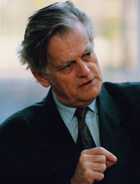 |
| The late Dr Alphonsus Kelly, not only a great engineer, manager, thinker and writer but the nicest bloke you could ever wish to meet. RIP, Al, old friend. |
These critiques are not argued against but are simply dismissed by some as “not peer-reviewed” and so ignored. However, as Kelly himself found, just like Dingle, the established journals wouldn’t even consider any challenge to the current dogma and so refused to publish. This is more indicative of an increasing lack of respect for true academic freedom and a growing intolerance within the scientific establishment. If the peer-reviewers are themselves unwilling to publish any challenge to the current dogma then their dismissal of such challenges merely for lack of peer review becomes merely self-serving.
Remarkably, Hafele, in his own report, stated that:
“Most people (including myself) would be reluctant to agree that the time gained by any one of these clocks is indicative of anything” and “the difference between theory and measurement is disturbing” .
An analysis of the shortcomings of the tests is given in Kelly’s 1996 paper assessing the results . This shows that a test of an accuracy improvement of two orders of magnitude would be required, before any credence could be placed in the results of such a test.
Later, on the 25th anniversary of the Hafele-Keating experiment, another time dilation experiment was undertaken by the National Physics Laboratory and involved flying a much improved atomic clock from London to Washington and back again and was filmed by the BBC’s Horizon programme.
This, too, has proved controversial. The experiment was undertaken to test if velocity could account for time dilation, so only the height, speed and estimated position were monitored. No data on the aircrafts’ acceleration, nor the forces of acceleration when and if the aircraft experienced any turbulence during the flight, was recorded in either of the experiments. This experiment has never been examined from the point of view of acceleration only. No account has been taken for turbulence during the flight or differences in the acceleration during take-off and landings.
If SR/GR were correct then the GPS would be very accurate but the truth is the system has an accuracy drift and no matter what adjustments are made to it, the system needs constant adjustment to maintain some sort of accuracy. The rate at which adjustments are needed to correct the system for the accuracy drift is increasing and in about ten years or less the GPS will (without further adjustments) become useless, unless the reason for this drift is found.
However, as Kelly showed, it was Georges Sagnac’s experiment of 1913 which put a spoke in the wheels of SR by disproving it experimentally. No-one has gainsaid Sagnac's result.
The accuracy of Sagnac’s test was 1:100. Macek and Davis, using lasers, achieved an accuracy of 1 in 10^12. Bilger et al, used a fixed ring-laser and achieved 1 in 10^20.
Einstein did not address the contradiction to his theory in the Michelson-Gale test even though he visited the team working on this problem in 1921 and he does not appear ever to have referred to the Sagnac test at all.
On a disc of huge radius a short light path approaches a straight line. It follows that an observer aboard an object which is travelling in a straight line at constant speed ±v, relative to the laboratory would, if it could be measured, record the speed of light, relative to oneself, as c - or + v. That observer would record "time" as the very same as observers in the laboratory.
Thus it is not “time” that changes, as claimed by SR, but the speed of the light that changes, relative to the observer aboard the object moving at uniform relative speed.
Crash goes the primary assumption of SR.
Some authors, e.g. Post, say that the Sagnac effect can exist as well as the SR effect. This cannot be so, because the Sagnac effect proves that light does not travel at the same speed relative to observers in uniform relative motion. The Sagnac effect is in direct contradiction of SR.
So said Kelly, reviving the Sagnac test, and he therefore proposed, as a result, a new theory. He said light, generated upon the Earth, travels with the Earth on its orbit around the Sun, but does not adapt to the spin of the Earth upon its axis.
...
Friday, 20 November 2009
Einstein, relativity and false scientific dogma (2)
CHALLENGING THE DOGMATIC MAGISTERIUM
OF MODERN SECULAR SCIENTISTS
(Post 2)
Van Flandern begins his article by recollecting that, as a graduate student of celestial mechanics at Yale, it was accepted that all gravitational interactions must be taken as instantaneous. At the same time, students were also taught that Einstein's special relativity proved that nothing could propagate faster than light in a vacuum. There seemed to be a plain contradiction. He was determined later to get to the bottom of it and now he has, he thinks, done so.
If c is the natural maximum limit at which anything may travel in a vacuum in the Universe, a primary nostrum of SR, then gravity cannot propagate at any speed greater than that natural limit. Yet if gravity does not do so then there must be an appreciable delay in its interaction, just as light takes time to travel from a light source to a receiver.
If this is so, then by the time the gravitational pull of the Sun has reached the Earth, then the Earth itself will have moved on for a further 8.3 minutes (the time interval if gravity propagates at the speed of light, c). By then the Sun’s gravitational pull upon the Earth will not be in the same straight line as is the Earth’s gravitational pull upon the Sun. The effect of this would be to double the Earth’s distance from the Sun every 1200 years.
Clearly, however, this is not happening.
Given that the planetary system has a far greater degree of stability than this, it is clear that gravity must propagate at a much greater speed than that of light, c. Newton himself assumed that gravity acted instantaneously, or near-instantaneously, and this assumption continues to be accepted in practice by astrophysicists.
The data supports this view, moreover, since evidence exists demonstrating that the Earth accelerates toward a point 20 arc-seconds in front of the visible Sun i.e. toward the true, instantaneous direction of the Sun. Its light comes to us from one direction, but its gravitational pull comes from a slightly different direction. The only reasonable inference is that the propagation speeds for light and gravity differ markedly.
The implications for SR are, of course, fundamental.
Others have had occasion to challenge the foundations of SR. In 1987, Dr Petr Beckmann, who taught at the University of Colorado, published his book Einstein Plus Two, which gave explanations of relativity which preserve traditional ideas about time.
In his article “Re-thinking Relativity”, Tom Bethell questioned Van Flandern about the problems associated with challenging Einstein. Van Flandern, he reports, says that the problem is that the Einsteinian experts who have grown accustomed to “Minkowski diagrams and real relativistic thinking” find the alternative of universal time and space actually more puzzling than their own mathematical ingenuities.
Once relativists have been thoroughly trained, he says, it’s as difficult for them to rethink the subject in classical terms as it is for laymen to grasp time dilation and space contraction. For laymen, however, and for those physicists who have not specialized in relativity, which is to say the vast majority of physicists, there's no doubt that the traditional way is far simpler than the Einsteinian.
From whence came the inspiration to posit a new theory like SR?
The answer is that it arose as a kind of sophisticated ad hoc to explain the inconvenient results of the 1887 Michelson-Morley experiment, itself designed to measure the isotropy of space and see if the heliocentricity of the solar system could be proven experimentally.
James Clerk Maxwell with his electromagnetism experiments had demonstrated that light waves were electromagnetic like radio waves. The question was to determine the medium through which electromagnetic waves travelled since they could clearly travel in airless space. The substance through which they were said to travel was then named the “aether” and, said Maxwell, it must be uniform throughout all space.
Michelson’s experiment sought to detect this aether by showing that, if the Earth orbits the Sun it must move through the aether and so cause a kind of “aether wind” in its tail. But there was no such wind to be observed. Worse than that, the interferometer device that Michelson was using and which ought to have shown a shift in the pattern of interference fringes on the light receptor when rotated through 90 degrees, did not do so.
“Fringe shifts” on the interferometer indicate changes of speed of light striking the equipment. This would show, and could be used to measure, the speed and direction of the Earth’s movement through aether and space. No fringe shifts were found.
This was particularly embarrassing. It seemed to show that the Earth was stationary, just as the water-filled telescope experiments of George Bidel Airey, the Astronomer-Royal, had shown. Given the Earth’s elliptical orbit round the Sun, light passing through a water-filled telescope ought to describe a larger ellipse than light passing through an ordinary scope, since the water would slow the passage of the light. It did not. The ellipses were identical.
 |
| George Bidel Airey, Astronomer Royal 1835-1881 |
The prospect of having to repudiate Copernicus and, more importantly, Galileo, and, worse still, having to apologise for their savage and repeated attacks upon St Robert Bellarmine and the Roman Inquisition, filled all red-blooded, materialistic, religiously sceptical and anti-Catholic scientists with utter horror. A solution was desperately needed. Indeed, an ad hoc solution would fit the bill at this stage, simply to avoid further embarrassment.
It duly arrived – as it always does. An obscure clerk in the Geneva Patent Office with a deep interest in astrophysics wrote his now globally famous paper Zur Elektrodynamik Bewegter Koerper.
Albert Einstein (for it was he) said there was no need of an aether, that there was no fringe shift because the speed of the light (in a vacuum) is the same for all observers, even for observers approaching or retreating from the light source. This was to turn Newtonian physics on its head because if the speed was the same, regardless of the motion of the observer, then light must slow down to meet the oncoming observer and speed up when chasing the observer who was retreating.
Worse, the ordinarily variable functions of time and distance which compose speed would have to dilate and contract accordingly and by just the right amount so that their division always gave the same result i.e. a constant speed for light.
This seemed to throw the obviously observed phenomena of everyday life entirely upon their heads. Ridicule was inevitable but for the simple explanation advanced by relativists that any appreciable degree of change would only be seen at very high speeds of the sort that only occurred in space or sub-atomically. Nevertheless, time and distance were no longer absolute but relative.
In fact, the way had already been prepared for these ideas. First came Fitzgerald, who had posited the idea of contraction in the direction of travel as an ad hoc to explain the Michelson result. Secondly, came Hendrik Antoon Lorentz who had first devised the idea of relative time and space which Einstein went on to perfect.
It was not long before it was being said that SR had been proved experimentally. Atomic clocks are said to slow down at high speed and sub-atomic particles are said to live longer due, ostensibly, to time dilation. But was this the only explanation for the experiments?
Much papering over the cracks in SR began to take place and dissent was rudely suppressed and silenced in a way that would have shocked St Robert Bellarmine, the Grand Inquisitor bogeyman of modern scientific fable.
 |
| Cardinal St Robert Bellarmine SJ, Grand Inquisitor and skilled philosopher, scientist and theologian, Jesuit and Doctor of the Church |
Now the cracks are widening and many physicists are beginning to take a renewed interest in the idea of the aether. Instead of the aether being uniform and isotropic, some are now saying that it corresponds to the gravitational field that all large bodies carry with them. Thus, close to the surface of a planet, the field may be more dense but as you move into space it becomes less so.
So hypothesized Beckmann before he died.
...
Thursday, 19 November 2009
Einstein, relativity and false scientific dogma (1)
SPECIAL RELATIVITY:
CHALLENGING THE DOGMATIC MAGISTERIUM
OF MODERN SECULAR SCIENTISTS
 |
| Albert Einstein |
For Relativity scientists this is a startlingly controversial claim for it means an end of the current dominance of the Special Theory of Relativity of Albert Einstein, one of whose primary assumptions is that the speed of light in a vacuum is a constant, c, for all observers.
In the Special Theory of Relativity (SR), ordinary Newtonian mechanics are reversed. Ordinarily, if you drive a car, its speed is distance/time, usually measured in miles or kilometres per hour. SR claims, for light, that speed is constant, that time dilates and length contracts in the direction of travel.
This is rather as if, putting it rather crudely, when you put your foot on the accelerator of your car, the car shrinks in length and time slows down.
Put that way, one begins to see why it was that SR was seen as so startlingly and difficult to accept, when first it was advanced.
However, the times were ready for startlingly unusual ideas and men like G B Shaw and Bertrand Russell seized upon the new theory as further evidence that the old world was on the way out and their Brave New World was on the way in.
Van Flandern worked in the 1990s as a special consultant to the Global Positioning System (GPS), a set of satellites whose atomic clocks allow ground observers to determine their position to within about a foot. He also shows that the GPS itself is a challenge to SR since it works without so-called relativistic corrections and eventually fails if the corrections are made.
In the 1960s, Professor Herbert Dingle, Professor of Theoretical Physics and Department head at the University of London, after first having supported SR, began to have doubts and wrote of them in his book Science at the Crossroads in 1972. From that time his star declined and eventually he was simply shut out of the scientific establishment who would not brook any challenge to its favourite theory even from someone of the stature of Dingle. The new scientific censorship was moving up a gear.
 |
| Albert Einstein's famous E=mc^2 was taken from a published work by a German mathematician 50 years earlier |
But Dingle had a point. He cited the so-called "clock paradox". The Relativity Principles stipulates that if one clock A, is moving relative to clock B, then they are both moving relative to each other.
Yet, at the same time, SR tells us that the moving clock runs slower than the non-moving clock. Moreover, if time runs slow for clock A because it is moving, then it will also run slower for clock B, relative to A. This is simply illogical.
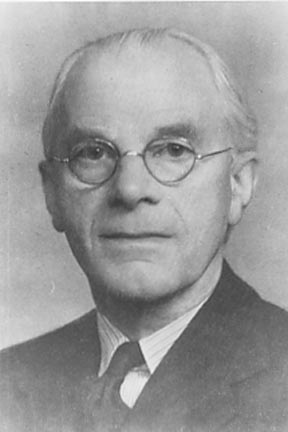 |
| Professor Herbert Dingle was Professor of Theoretical Physics and Department head at the University of London, and, after first having supported SR, began to have doubts and wrote sceptically of the theory in his book Science at the Crossroads in 1972. For this he was expelled by the establishment. |
Dingle wrote:
“a proof that Einstein's special theory of relativity is false has been advanced; and ignored, evaded, suppressed and, indeed, treated in every possible way except that of answering it, by the whole scientific world”.
[to be continued]
...



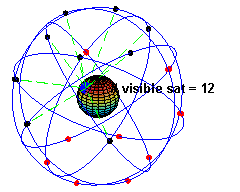



.jpg)














.jpg)


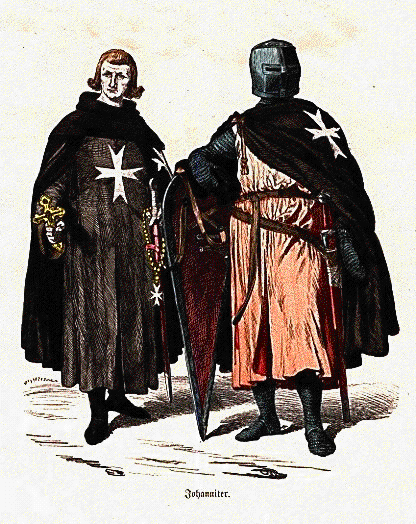






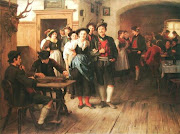

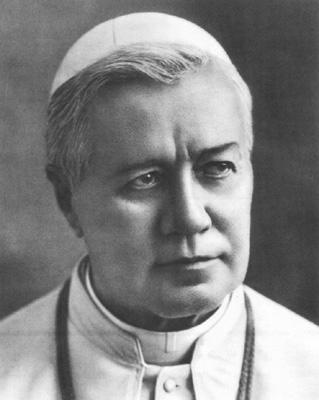






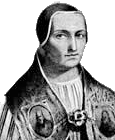







_-002.jpg/220px-Circle_of_Anton_Raphael_Mengs,_Henry_Benedict_Maria_Clement_Stuart,_Cardinal_York_(ca_1750)_-002.jpg)


